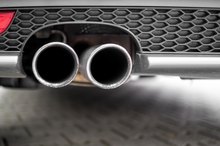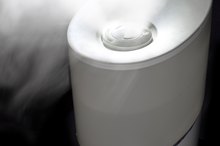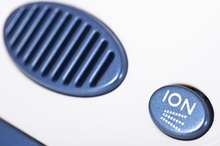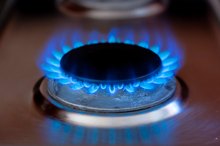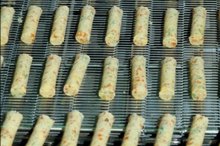Harmful Effects of Air Purifiers
Indoor air purifiers are devices made to clean the air of common indoor and outdoor pollutants such as ozone, mold, pollen, dust and pet dander. The HEPA air purifier is considered the best on the market and is 99.97 percent effective according to Happy Living. Other air purifier systems may lack in effectiveness for various reasons; air purifiers that use ozone instead of HEPA filters have been found to cause harmful effects on people's health.
If you are experiencing serious medical symptoms, seek emergency treatment immediately.
Air Contaminants
Certain air purifier companies claim to remove toxic indoor pollutants. Ozone is a common indoor and outdoor highly reactive gas composed of three oxygen atoms. Exposure to ozone is dangerous. This ground-level ozone is harmful when it reacts between two major classes of air pollutants: volatile organic compounds and nitrogen oxides—mostly emitted from man-made pollutants (gasoline, chemical plants and other industrial product). According to MSNBC Consumer Reports, air purifiers are supposed to remove certain toxic levels of troposphere ozone from an indoor environment 1. However, the Consumer’s Union in 2005 found certain air purifiers are ineffective in removing airborne ozone pollutants. When the third atom on the ozone detaches itself from the other two atoms, it reattaches itself to the molecules of other airborne substances, changing their chemical composition. The air purifier system is not capable of reconfiguring the chemical composition of the ozone molecule. Therefore, any claims that an air purifier removes or filters out ozone pollution is debatable.
- Certain air purifier companies claim to remove toxic indoor pollutants.
- According to MSNBC Consumer Reports, air purifiers are supposed to remove certain toxic levels of troposphere ozone from an indoor environment 1.
Health
Facts of Car Pollution
Learn More
Some air purifiers manufacturers assert that their air products produce ozone electrical charges as "energized oxygen" or "pure air" as a healthy kind of oxygen to inhale. The U.S. Environmental Protection Agency states that many air purifiers do indeed, generate ozone gases 2. However, these ozone gases are not always safe. Inhaling ozone can cause significant damage over time to a person’s lungs, exacerbating asthma and other bronchial conditions. According to MSNBC, even relatively low amounts of ozone inhaled can cause chest pain, coughing, shortness of breath and throat irritation. Ozone can also compromise the ability of the body to fight off respiratory infections. Healthy lungs can experience breathing difficulties when exposed to air purifiers' ozone too. Exercising when exposed to ozone causes an even greater amount of the ozone to be inhaled, increasing harmful respiratory effects. Whereas a quick recovery can occur when exposed to low levels, certain health conditions can worsen and have a slower recovery time when exposed to high levels of air purifier ozone.
- Some air purifiers manufacturers assert that their air products produce ozone electrical charges as "energized oxygen" or "pure air" as a healthy kind of oxygen to inhale.
- Whereas a quick recovery can occur when exposed to low levels, certain health conditions can worsen and have a slower recovery time when exposed to high levels of air purifier ozone.
Air Purifier Ionizer
The Home Purifier Expert states that "ozone air purification does not remove particles (e.g., dust and pollen) from the air, including the particles that cause most allergies." The air purifier's ionizer feature is supposed to help disperse common indoor pollutants by separating negative and positive charged ions into the air and allowing the ions to attach to nearby surfaces or settle in the air 3. Ionizers—as the Home Purifier Expert states—have been found to be ineffective in removing particles of dust, tobacco smoke, pollen or fungal spores because they are not capable of producing large amounts of ions to "push the particles to the walls and floor."
Filtration
Breathing Ionizer Dangers
Learn More
According to U.S. Environmental Protection Agency, recent studies have proven the low efficiency of filters with permanent electrostatic fields that drop significantly when the filters become dirty 2. Failure to replace or clean out a filter can cause significant breathing problems when an individual is inhaling dispersed air pollutants that cannot be properly filtered out.
Related Articles
References
- MSNBC: Consumer Reports Calls Air Purifier ‘Unhealthy’
- The Environmental Protection Agency: Ozone Generators that are Sold as Air Cleaners
- Home Air Purifier Expert: Just Say No To Ozone Air Cleaners!
- The American Academy of Ozonotherapy. What is ozone therapy?.
- US Food and Drug Administration. Code of federal regulations title 21. 2019.
- Borrelli E, et al. The use of ozone in medicine. Ann Med Health Sci Res. 2018;8:117-119
- Khan S, Smith N, Wilson A, Gandhi J, Vatsia S. Ozone therapy: an overview of pharmacodynamics, current research, and clinical utility. Med Gas Res. 2017;7(3):212. doi:10.4103/2045-9912.215752
- Rade B. Ozone therapy: an effective solution for acute and chronic pain. Naturopathic Doctor News & Review. 2014.
- Hao K, Tang S, Xie H, Li X, He X. Application of ozone therapy in interventional medicine. J Interv Med. 2019;2(1):8-11. doi:10.1016/j.jimed.2019.05.003
- Juchniewicz H, Lubkowska A. Therapy in peripheral arterial disease (PAD): a review study. Ther Clin Risk Manag. 2020;16:579-594. doi:10.2147/tcrm.s255247
